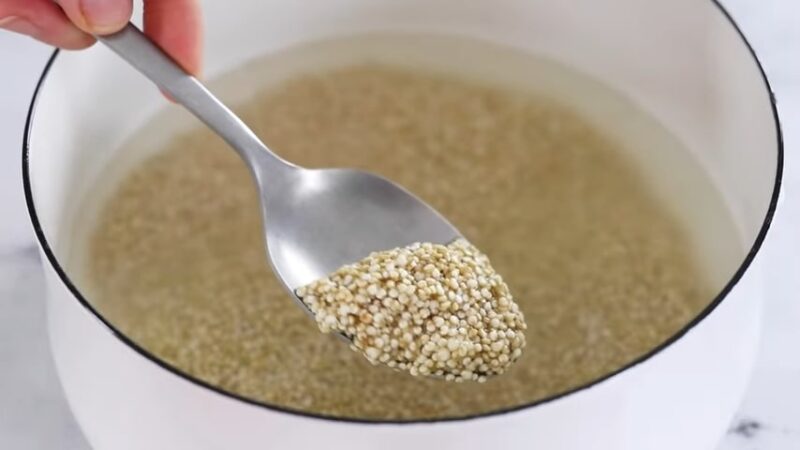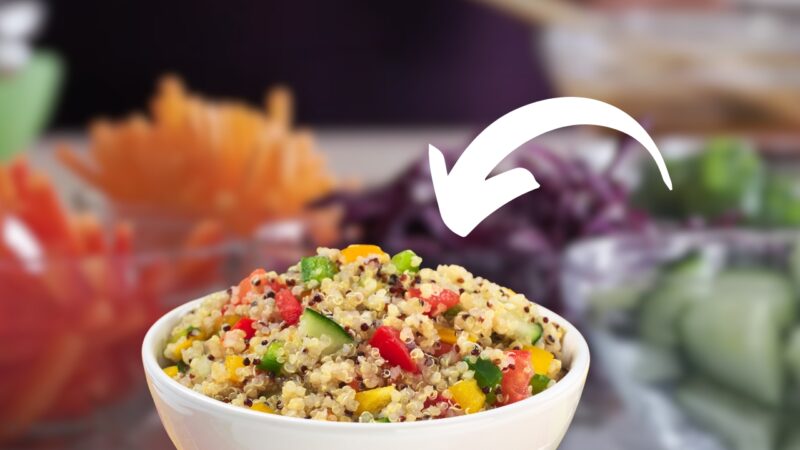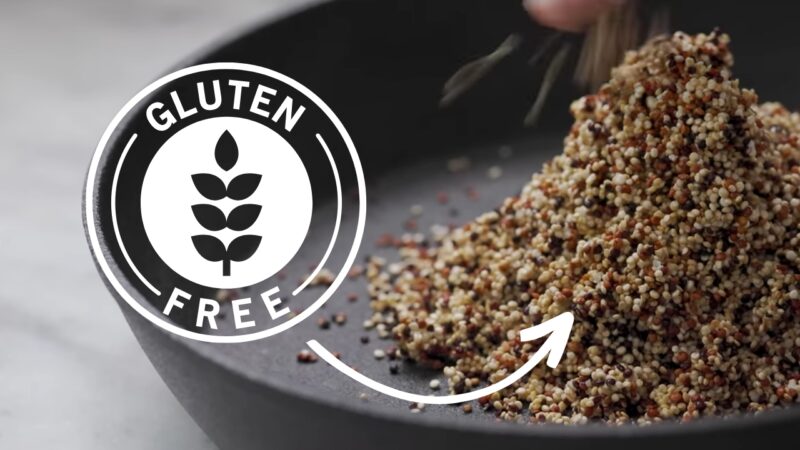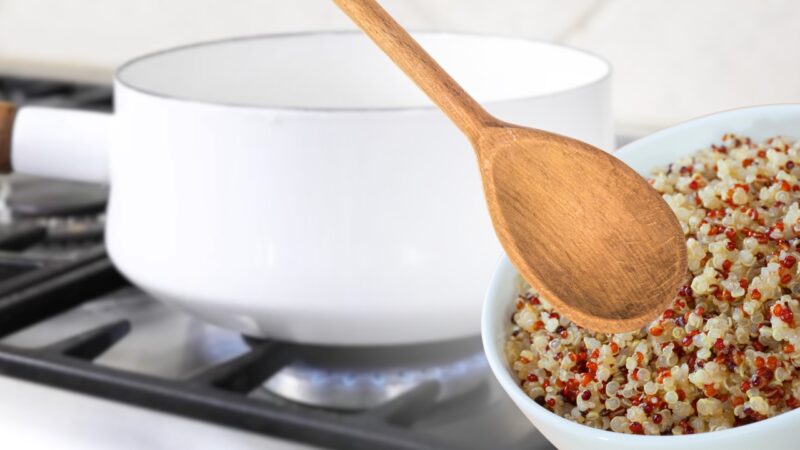Quinoa, is a nutrient-dense seed that has gained popularity as a health food in Western countries. It’s been cultivated in South America since ancient times, and the Inca people even considered it a sacred food.
Packed with nutrients like protein, zinc, fiber, and folate, as well as antioxidants. It’s also gluten-free, making it a great choice for those with dietary restrictions.
Learning how to cook quinoa on the stove is important because it’s a versatile food that can be added to both sweet and savory dishes. Plus, it doesn’t take long to prepare, making it a convenient choice for busy individuals and families.
What is Quinoa?
A grain crop grown for its edible seeds. These seeds are what we call quinoa. Despite being cultivated for thousands of years, but it’s only gained popularity in Western countries in the past couple of decades.
There are many types, including red, black, and white. Each variety has its unique taste and texture, but all are equally nutritious. Despite the different colors, all types cook the same way and can be used interchangeably in recipes.
Often considered a superfood because it’s loaded with many important nutrients, including fiber, protein, folate, and magnesium. It also contains plant compounds like quercetin and kaempferol, which have powerful antioxidant and anti-inflammatory effects in the body.
Preparing for Cooking
Before cooking quinoa, it’s important to rinse it thoroughly to remove saponins. These are found naturally on the outer layer and can have a bitter flavor.
Soaking before cooking is optional but can improve its digestibility. This step also helps to reduce the antinutrient content, making the minerals in quinoa more bioavailable. Soaking can also make it cook a bit faster.
After rinsing and optional soaking, it’s important to let dry before cooking. This helps it cook evenly and achieve the desired fluffy texture.
Cooking on the Stove

After rinsing and drying, add to a pot with water and a dash of salt, then bring it to a boil. Reduce the heat and let it simmer until the quinoa has absorbed most of the water and gotten a fluffy look.
The perfect water-to-quinoa ratio for cooking is 2:1. If you want your it to be a bit crunchier, you can reduce the water by a little bit.
Quinoa should be cooked on a low simmer. The cooking time can vary, but generally, it takes about 15 to 20 minutes for to absorb the water and become fluffy. You’ll know the quinoa is done when all the water is absorbed and you can see the tiny spirals (the germ) separating from and curling around the quinoa seeds.
Flavoring and Seasoning
Quinoa has a mild, nutty flavor that can be enhanced with the addition of salt and a bit of oil or butter. Toasting in a bit of oil before boiling can bring out its natural nutty flavor even more.
For added flavor, you can cook in vegetable broth or coconut milk instead of water. This will infuse the quinoa with an added taste that complements many dishes. You can also add a bay leaf or two to the cooking water (or broth) for an extra layer of flavor.
Quinoa pairs well with a variety of herbs and spices, allowing you to tailor its flavor to suit different cuisines. For example, you might add cumin and coriander for a Middle Eastern twist, or basil and oregano for an Italian flair.
Serving Suggestions

Can be served as a standalone side dish, perhaps seasoned with a bit of olive oil, salt, and lemon juice. Often used as a healthier alternative to rice or couscous.
Also a great addition to salads and bowls, adding a satisfying crunch and a boost of protein. Quinoa salads can be served hot or cold, making them a versatile option for meals and packed lunches.
Can be used in stir-fries and can also be used as a stuffing for vegetables like bell peppers or tomatoes. When used in stir-fries, quinoa can absorb the flavors of the other ingredients, making for a tasty and nutritious dish.
Storing Cooked and Uncooked
Uncooked quinoa should be stored in an airtight container in a cool, dry place. If stored properly, it can last for several years.
Cooked quinoa can be stored in the refrigerator for up to a week. Be sure to let it cool completely before transferring it to an airtight container for storage. Cooked quinoa can also be frozen for up to a year, making it a great option for meal prep.
When reheating cooked quinoa, you can add a splash of water or broth to prevent it from drying out. You can reheat in the microwave, on the stove, or even in a steamer.
Something Tastes Wrong?
If your quinoa is overcooked or undercooked, it might be due to the cooking time or the amount of water used. If undercooked, you can add a bit more water and continue cooking. If it’s overcooked, you can turn it into a creamy porridge by adding a bit of milk and sweetener.
If your quinoa is sticky or mushy, it might be because it was cooked at too high a temperature or because too much water was used. To prevent sticky quinoa, make sure to rinse it thoroughly before cooking to remove the natural coating of saponins, which can cause clumping.
If your quinoa tastes bitter, it’s likely due to the saponins. As mentioned earlier, these can be removed by thorough rinsing. Some people actually like the slightly bitter taste that saponins give to quinoa. If you’re not one of them, just make sure to rinse well before cooking.
FAQ

Is quinoa gluten-free?
Yes, naturally gluten-free, making it a great choice for those with celiac disease or non-celiac gluten sensitivity.
Can I skip the rinsing step?
It’s not recommended to skip the rinsing step as quinoa naturally contains saponins, which can give it a bitter taste.
How long should I soak is it necessary?
Soaking is optional but can improve its digestibility and reduce its antinutrient content. If you choose to soak it, a few hours or overnight is usually sufficient.
Can I cook with other grains or mix it with rice?
Yes, mixing with rice or other grains can add a nice texture contrast and boost the nutritional value of your meal.
Is it possible to cook in a rice cooker or instant pot instead of on the stove?
Yes. The cooking time and water ratio may vary depending on the appliance, so be sure to check the manufacturer’s instructions.
Conclusion
A versatile and nutritious food that can be a great addition to any diet. Its high protein, fiber, and antioxidant content, along with its gluten-free nature, make it a superfood worth incorporating into your meals.
I encourage you to experiment with different cooking styles and flavor combinations. Whether you prefer it sweet or savory, quinoa can adapt to your palate and enhance your dishes with its unique texture and nutritional profile.
Cooking on the stove is simple and straightforward. With the tips and techniques shared in this article, you’ll find that quinoa can easily become a staple in your balanced diet. Happy cooking!

